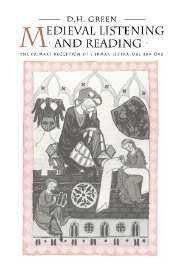1 - Orality and writing
Published online by Cambridge University Press: 04 September 2009
Summary
When Guillaume Fichet, a member of the Sorbonne, looked back in 1471 on the history of what we today should term communications technology he divided it into three periods: classical antiquity (which employed the calamus or reed pen), followed by a period which for us is the Middle Ages (which used the penna or quill pen), and then a period which had only just begun (characterised by aereae litterae or movable type). Just over 500 years later an American scholar, Ong, divided a historical span longer than with Fichet into orality, writing, printing, and electronic communications. However much these two may differ over details, the position they occupy is comparable: each stands near the start of a communications shift which has alerted him to other changes in the past. Literacy has attracted scholarly attention at a point when its ascendancy seems threatened by modes of communication which also depend on a ‘secondary orality’, whilst Ong has claimed explicitly that ‘contrasts between electronic media and print have sensitized us to the earlier contrast between writing and orality’. We need not go as far as Havelock, who proposed that our new alertness can be dated by a number of publications in the annus mirabilis 1962–3 (including, unsurprisingly, one of his own), in order to agree with the point that recent work has been stimulated by recent technology.
- Type
- Chapter
- Information
- Medieval Listening and ReadingThe Primary Reception of German Literature 800–1300, pp. 3 - 19Publisher: Cambridge University PressPrint publication year: 1994



